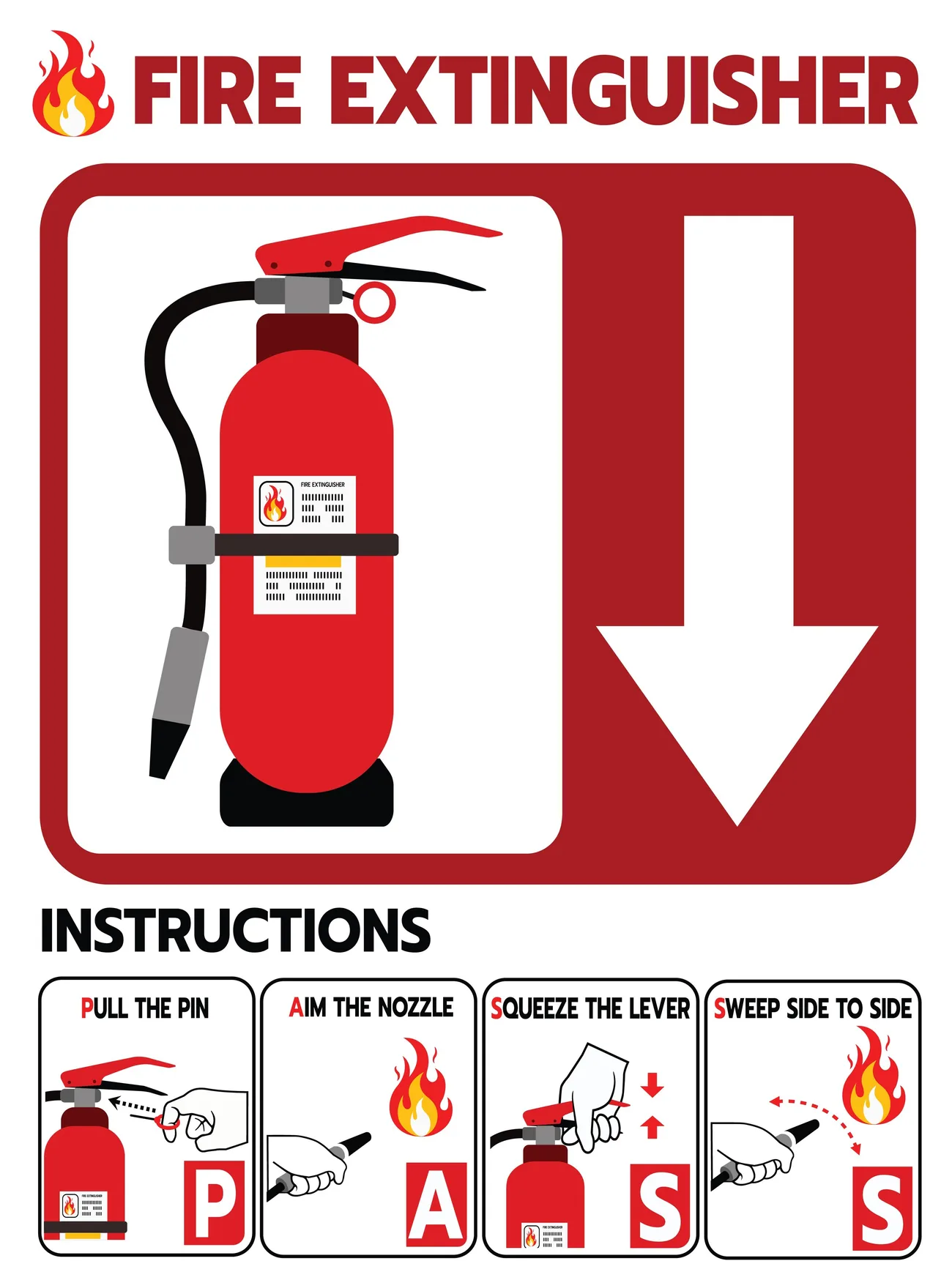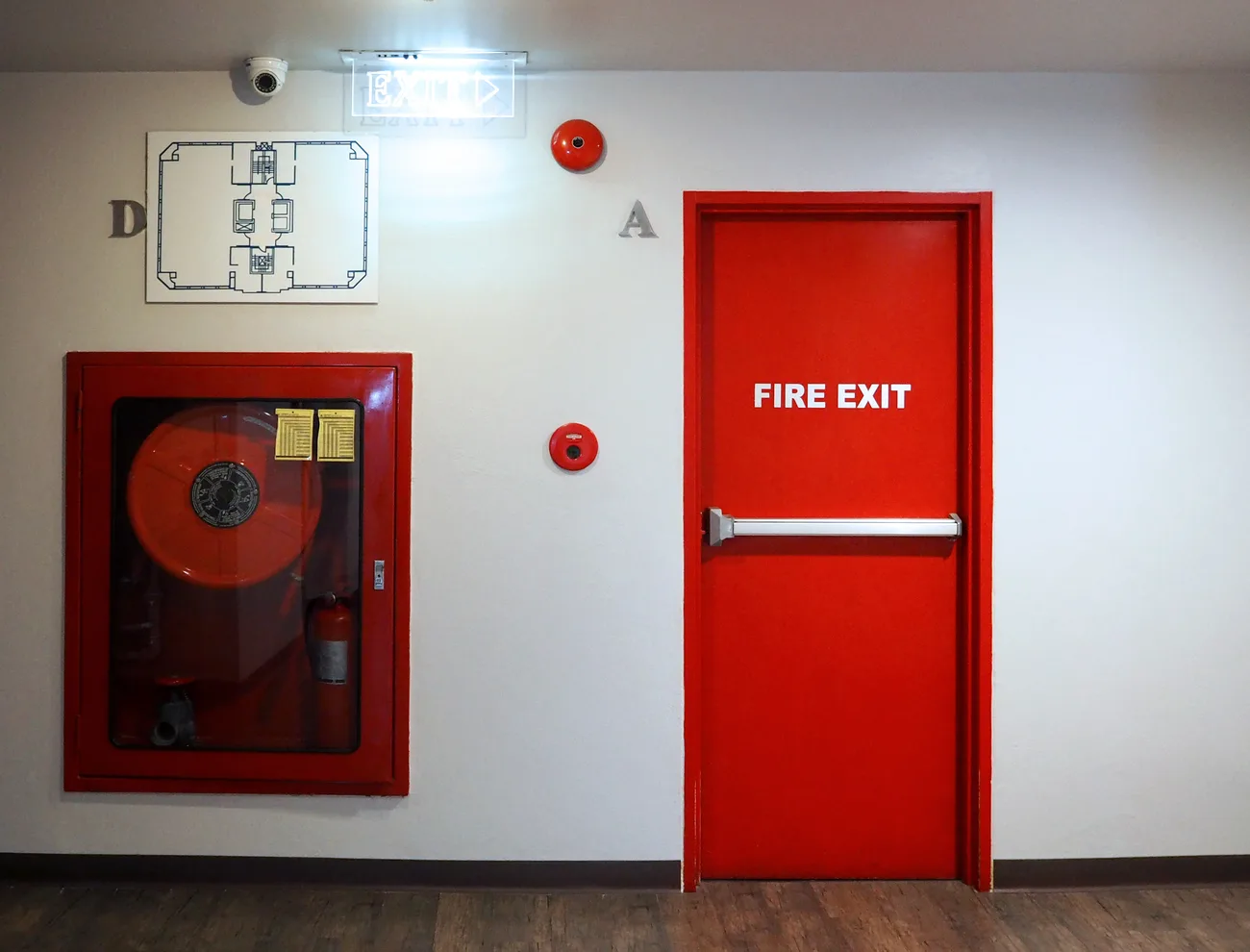
Product Guide
Workplace Fire Safety: Best Practices in Hazardous Industries

In industries where hazardous materials and processes are commonplace, fire safety is not just a regulatory requirement but a critical component of operational integrity. Implementing robust fire safety measures protects employees, assets, and the environment. This guide outlines best practices for fire safety in hazardous workplaces, aligning with OSHA standards and NFPA 70E guidelines, and explores tools like flame-resistant tarps that mitigate risk.
Understanding Fire Risks in Hazardous Work Environments
Hazardous industries often involve flammable materials, high-temperature processes, and complex machinery, all of which elevate fire risks. Common fire hazards include:
- Flammable Liquids and Gases: Improper storage or handling can lead to leaks and spills, creating fire hazards.
- Electrical Equipment: Faulty wiring or overloaded circuits can ignite fires.
- Hot Work Operations: Welding, cutting, and grinding can produce sparks that ignite nearby combustibles.
- Combustible Dust: Accumulation of dust in certain industries can lead to explosive fire hazards.
Understanding these risks is the first step in developing effective fire prevention strategies.
Implementing OSHA-Compliant Fire Safety Measures
The Occupational Safety and Health Administration (OSHA) provides comprehensive guidelines to mitigate fire hazards in the workplace. Key measures include:
1. Develop a Fire Prevention Plan (FPP)
A Fire Prevention Plan identifies potential fire hazards and outlines procedures to prevent fires. It should include:
List of major fire hazards and proper handling/storage procedures, like using a fire retardant tarp to shield flammable stock.
Maintenance of safeguards on heat-producing equipment.
Names or job titles of employees responsible for maintaining equipment and controlling fuel source hazards.
2. Establish an Emergency Action Plan (EAP)
An Emergency Action Plan details the actions employees must take in the event of a fire, including:
Emergency evacuation procedures and route assignments.
Procedures for employees who are required to operate critical operations before evacuation.
Accounting for all employees after the evacuation.
3. Provide Fire Extinguisher Training
Employees must be trained on the proper use of fire extinguishers. Training should cover:
Types of fire extinguishers and their appropriate use.
PASS technique (Pull, Aim, Squeeze, Sweep).
Limitations and risks associated with fire extinguisher use.
Regular drills and refresher courses ensure preparedness and compliance with OSHA standards.

Looking for Flame-Resistant Tarps? Here you go!
Adhering to NFPA 70E Standards for Electrical Safety
Electrical hazards are a significant concern in hazardous industries. The National Fire Protection Association's (NFPA) 70E standard provides guidelines to protect workers from electrical hazards, including:
Arc Flash Risk Assessment: Identifying potential arc flash hazards and implementing protective measures.
Establishing Electrically Safe Work Conditions: De-energizing equipment before maintenance.
Personal Protective Equipment (PPE): Using appropriate PPE for electrical work.
Training and Awareness: Educating employees on electrical hazards and safe work practices.
Compliance with NFPA 70E not only enhances safety but also aligns with OSHA requirements for electrical safety in the workplace.
Conducting Regular Fire Risk Assessments
Regular fire risk assessments are crucial for identifying and mitigating potential fire hazards. Assessments should:
Evaluate fire hazards associated with processes, equipment, and materials.
Assess the effectiveness of existing fire prevention measures, such as whether fire retardant tarps are properly installed.
Recommend improvements or additional controls.
Be documented and reviewed periodically, especially after changes in operations or incidents.
Engaging qualified professionals to conduct these assessments ensures a thorough evaluation and compliance with safety standards.
Implementing Fire Prevention Strategies
Effective fire prevention in hazardous industries involves a combination of engineering controls, administrative policies, and employee training:

1. Engineering Controls
Fire Detection and Suppression Systems: Install smoke detectors, fire alarms, and sprinkler systems.
Ventilation Systems: Prevent the buildup of flammable vapors.
Explosion-Proof Equipment: Use equipment designed to prevent ignition in hazardous environments.
Flame-Resistant Tarps: Protect exposed flammable materials and contain sparks during hot work, leveraging the science behind fire-retardant tarps to provide reliable barrier protection.
2. Administrative Controls
Safe Work Procedures: Develop and enforce procedures for handling flammable materials and performing hot work.
Housekeeping Practices: Maintain cleanliness to prevent the accumulation of combustible materials.
Storage Protocols: Store flammable substances in appropriate containers and designated areas.
3. Employee Training
Fire Safety Training: Educate employees on fire hazards, prevention measures, and emergency response.
Drills and Simulations: Conduct regular fire drills to reinforce training and evaluate response effectiveness.
Continuous Education: Provide ongoing training to keep employees informed about new hazards and safety procedures.
A comprehensive approach combining these strategies significantly reduces the risk of workplace fires.
Developing a Fire Safety Checklist for Hazardous Environments
A fire safety checklist serves as a practical tool to ensure all safety measures are in place and functioning correctly. Key elements to include:
Fire Extinguisher Accessibility: Ensure extinguishers are readily available and inspected regularly.
Emergency Exits: Verify that exits are marked, unobstructed, and functional.
Alarm Systems: Test fire alarms and detection systems periodically.
Storage Compliance: Verify flammable materials are stored correctly, using fire-resistant tarp coverings if necessary.
Electrical Safety: Inspect wiring and equipment for signs of wear or damage.
Employee Training Records: Maintain documentation of fire safety training sessions.
Consistent use of this checklist fosters a proactive safety culture and regulatory compliance.

Looking for Flame-Resistant Tarps? Here you go!
Conclusion
Fire safety in hazardous industries is a comprehensive effort requiring diligent planning, regulatory compliance, and active employee engagement. Incorporating tools like fire-retardant coverings and fire detection systems, along with OSHA-compliant measures, NFPA 70E adherence, and regular risk assessments, helps organizations withstand fire risks and safeguard people and property.
Frequently Asked Questions (FAQs)
What are common fire hazards in hazardous industries?
Common hazards include flammable liquids and gases, faulty electrical equipment, hot work operations, and combustible dust accumulation.
How can we prevent workplace fires in hazardous industries?
Implement a layered approach: identify ignition sources, separate them from combustibles, enforce rigorous housekeeping, and install automatic detection/suppression systems. Pair these measures with a written Fire Prevention Plan (FPP) that is reviewed at least annually and whenever processes change.
Why are flame-resistant tarps essential during welding and other hot-work tasks?
Certified flame-resistant tarps (NFPA 701, CPAI-84, or California Title 19) block sparks, slag, and radiant heat, preventing ignition of nearby materials and containing hot debris within a controlled area—an inexpensive engineering control that supports OSHA 1910.252 requirements.
Can flame-retardant tarps be reused after exposure to sparks or heat?
Yes—if inspections show no holes, melted seams, or degraded coatings. Retire tarps when stitching loosens, certification tags become illegible, or surface charring exceeds manufacturer limits. Document inspections and replacement dates for compliance tracking.
Do NFPA 70E standards recommend tarp usage?
NFPA 70E focuses on electrical and arc flash safety, but using protective barriers like flame-resistant tarps can be a best-practice supplement during arc-flash risk mitigation.
How does NFPA 70E relate to OSHA regulations?
NFPA 70E provides guidelines for electrical safety in the workplace, complementing OSHA regulations by offering detailed practices to prevent electrical hazards.
How are tarps transforming transportation safety for hazardous cargos?
Modern, multi-layer tarps combine fire-retardant coatings with antistatic properties, reducing ignition risk from both heat and friction. They secure loads against wind shear, prevent material loss, and limit exposure to sparks from roadside repairs or nearby hot work.
Get a Free Quote
Ready to order or looking for more info? We’re here to help!Questions?
Call Us Today!
Visit Us
Pennsylvania:
5000 Paschall Ave
Philadelphia, PA 19134
Indiana:
11 Lousisa St.
Gosport, IN 47433


